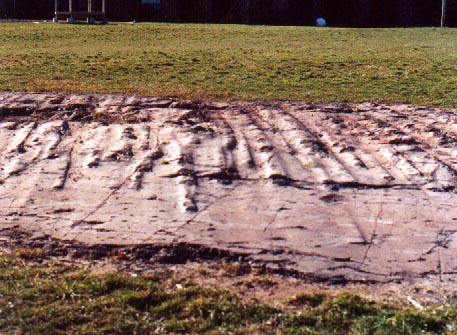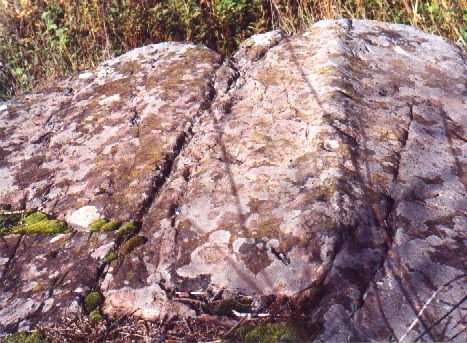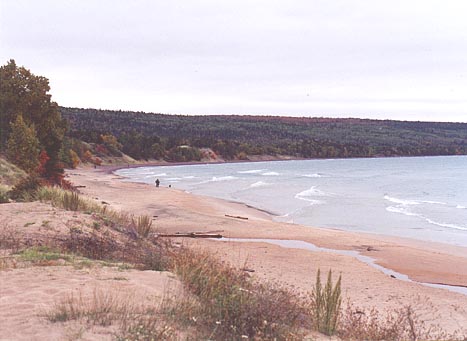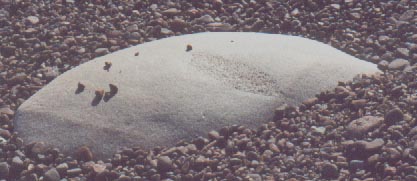 |
VIRTUALFIELD TRIP TO THE KEWEENAW PENINSULA, MICHIGAN - PLEISTOCENE GEOLOGIC HISTORY
The glaciers in the past two million years have had a significant effect onshaping the Keweenaw peninsula. They have gouged out Lake Superior, the interiorlakes on the peninsula and control the topography of the peninsula. There arethin (50-100 feet) glacial deposits covering most of the area, except where more resistantrocks form hills and cliffs. Four major glaciations occurred during the last two million years. The majorityof the landforms were developed during the retreat of the last Wisconsin stageglaciation. The maximum amount of ice over the peninsula was over 3000 m as theice sheets reached into central Illinois and Ohio. As the ice sheets retreated,there were various glacial lakes filling the Lake Superior basin. Higher lakelevels are evidenced by the formation of terraces ( basically stranded beaches).Isostatic rebound ( crustal uplift due to the unloading of the weight of theice) causes the terraces to dip to the south. Most of the peninsula is coveredby hummocky ground moraine. Glacial features include grooves and striations,moraines, eskers and kames.
Glacial grooves (Stop 33 N47° 14.74' W88° 26.82') at Calumet behindthe school. Spacingbetween grooves is 25 cm with a 3-5 cm amplitude. These grooves are caused byrocks at the bottom of the glacier being plowed though the bedrock. The finergrained material carried by the glacier causes the bedrock to become polished.
Glacial grooves on basalt (Stop 3) Hurontown. Small rochesmoutonnees are developed here ( smooth slope facing direction of ice movementwith a plucked steep slope on the down side of ice movement).
An atypical sand beach (Great Sand Bay - N47° 26.53' W88° 13.07'). Sand was produced from glacialLake Superior's Nipissing Stage. Most of the beaches consist of weathered volcanicrocks or reworked volcanics found in the conglomerates ( some minor purplepebbles at curve in bay). Sand dunes are developed by the wind further onshore. On the eastern shore ofthe peninsula, white beaches were derived from the country rocks (Jacobsvillesandstone).
Glacial erratic. Stop C1 Horseshoe Harbor. This 50cm boulder was transported bythe glaciers from Canada. The more pockmarked section near the center was a xenolithof a more granitic rock stoped into a slightly more felsic rock. |
 | 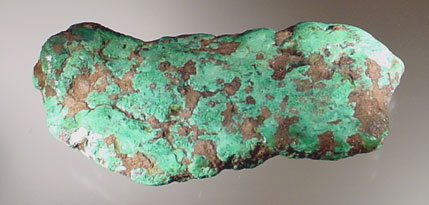 |
| The glaciers also transported native copper to the south. This 7 cm. longspecimen was found in glacial till near Waupaca, Wisconsin, approximately 200miles south of Houghton. Note the areas of alteration to malachite. The rock hasalso been slightly rounded during the transport in the glacier. Specimen consistsalmost completely of native copper with minor areas of iron oxides/hydroxides. | This 11 cm. specimen is from the Houghton area. It has been in contact with the ground water for a sufficient period of time to develop a thick coating of malachite. Specimens of float copper were valued by the native Americans since they could be worked with relative ease and did not require mining. Even though this specimen was not transported as far as the specimen to the left, there was more abrasion and rounding of the copper. |
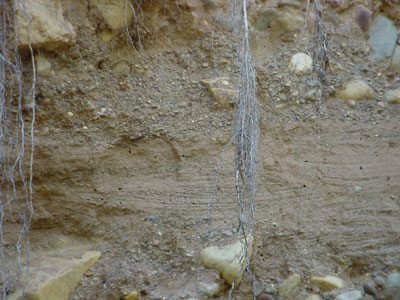 |
| Glacial sediments, Caledonia mine. These glacial crossbedded sands and conglomerates were formed by deposition in a small glacial lake that emptied when the ice melted. Field of view is one meter. |
[Include:'../../../inc/footer.html'] |
